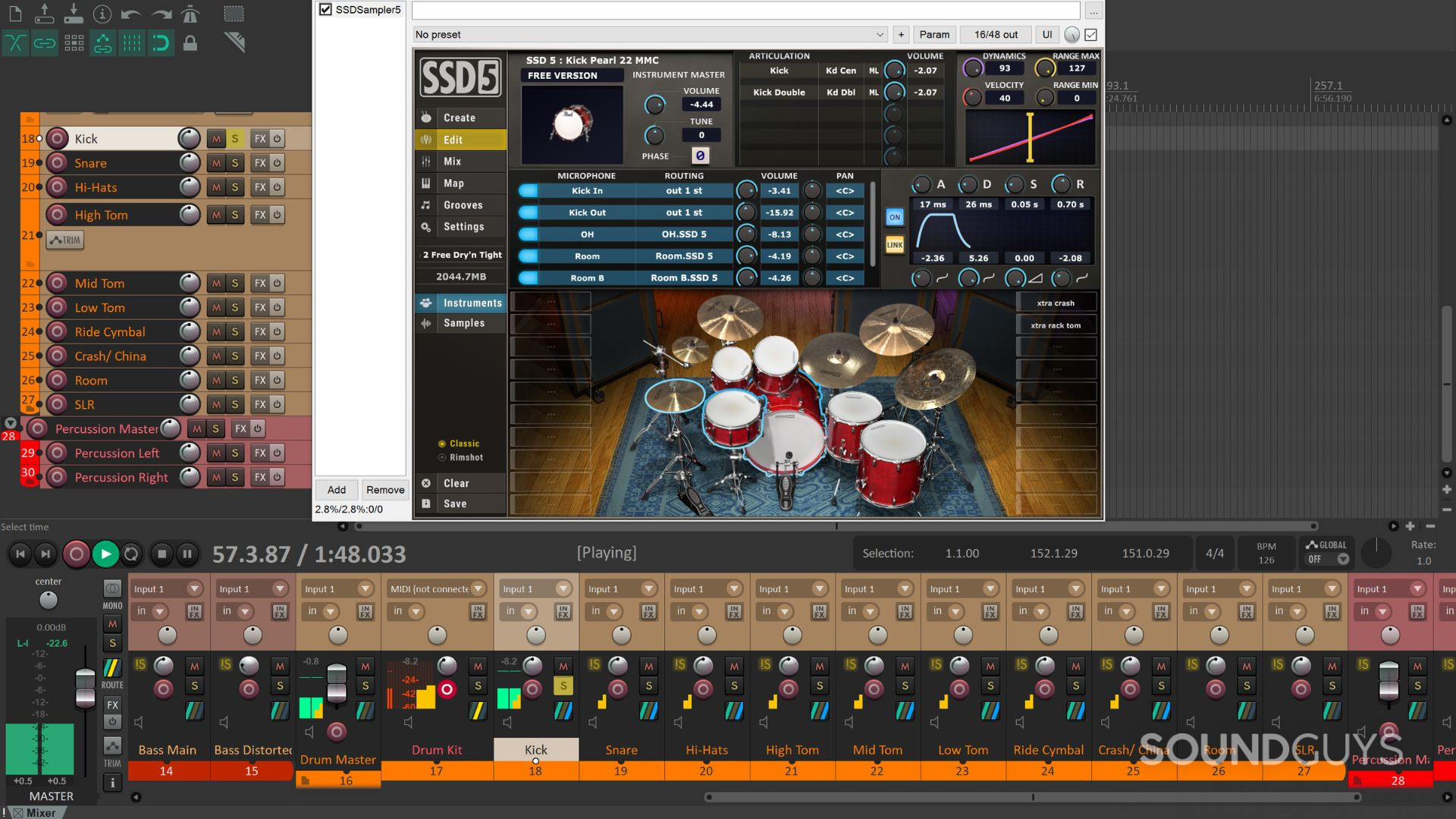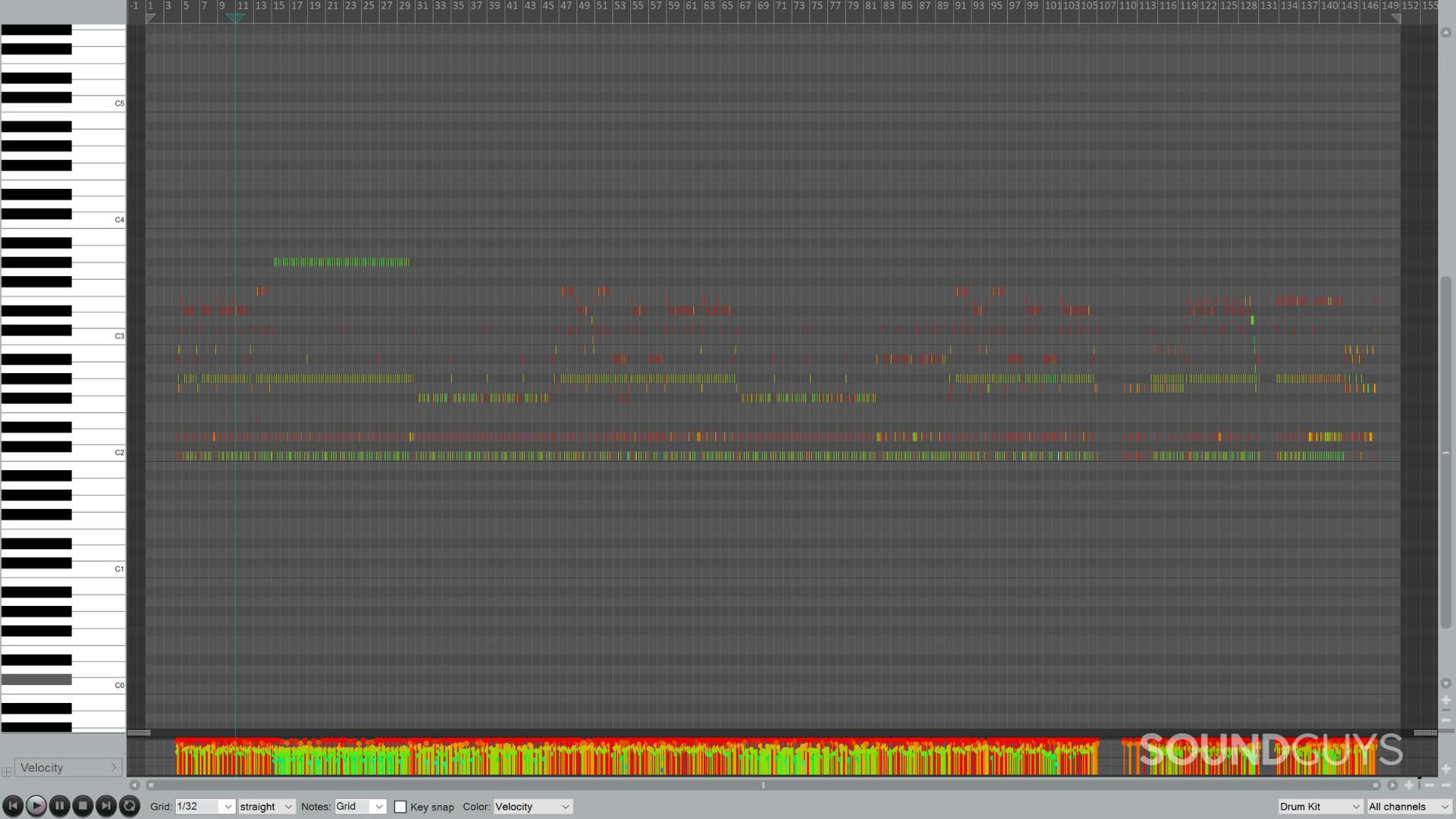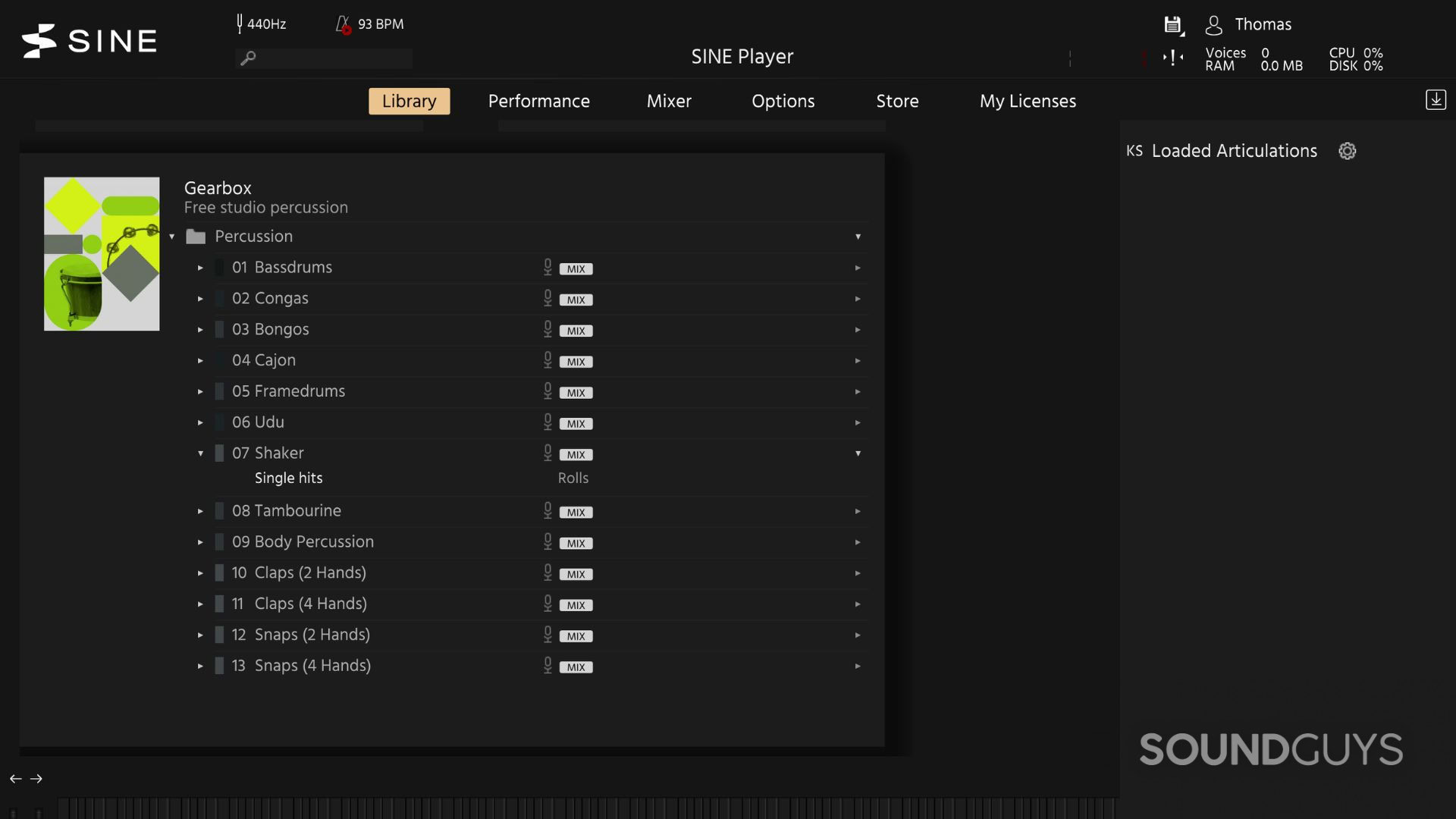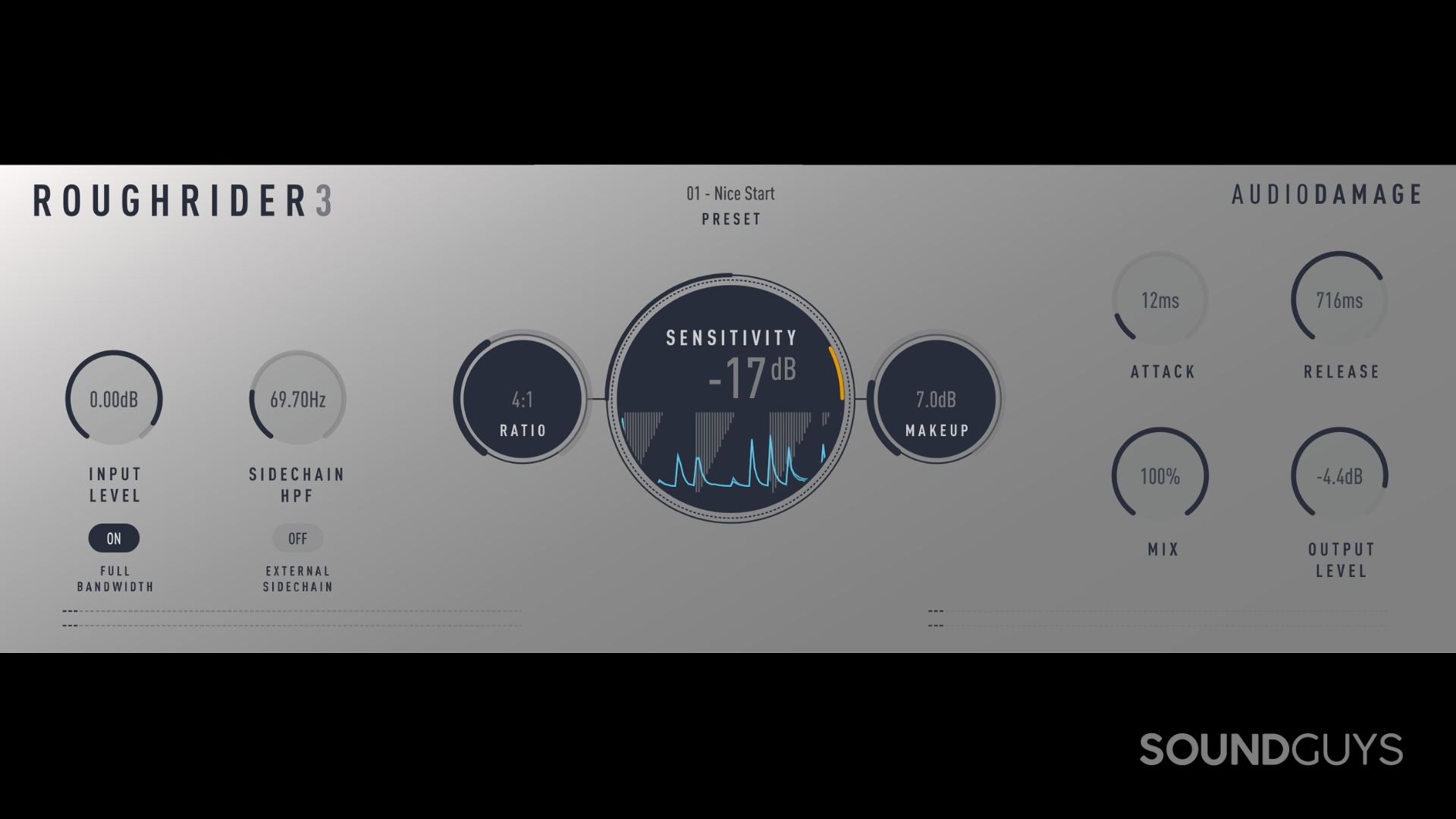All products featured are independently chosen by us. However, SoundGuys may receive a commission on orders placed through its retail links. See our ethics statement.
How to make MIDI drums sound better
November 8, 2024

Have you ever been working on a song only to find that your MIDI drums sound synthetic and robotic? Me too. Tired of my tracks sounding incomplete, I embarked on a journey to make my VST drums sound more realistic. Sure, no amount of programming finesse can perfectly emulate the nuances of an acoustic drum kit. However, MIDI drums allow musicians to explore their creativity and record music in different styles and genres. From practicing good velocity modulation to introducing more complex articulation, composers and producers have many tools in the shed to explore. Here’s a quick guide on how to make MIDI drums sound better.
Time to be a little more articulate

You are only as strong as your weakest link. So the saying goes for recording MIDI drums. If you have ever seen a drummer perform live, you will have noticed fluctuations in dynamics, tempo, and feel. Very few professional drummers play without a keen sense of expression. Subsequently, MIDI should be programmed with subtle nuances to replicate real drummers. These include shifting drum voices marginally off the metronome and including rudiments such as drags, flams, and ruffs.
Even so, MIDI velocity plays an imperative role when programming drums. For example, the first two hits of a drag are usually played softer than the subsequent strike. Likewise, the first hit of a flam is played softer than the following drum hit. Articulations often sound unrealistic if you don’t spend time tinkering with your MIDI tracks’ velocity. Learning some rudiments before recording MIDI drums can also provide a deeper understanding of how real drummers perform. Careful consideration should be given to dynamics throughout, as no two drum strikes are the same.
Ghost notes, drags, flams and other articulations can make MIDI drums sound much more realistic.
Quantizing MIDI drums can be tempting, especially given how much time it saves. But beware — quantized drums often dehumanize your groove. Quantizing software can also make mistakes and change rhythms to something you didn’t compose. This is particularly frustrating when you have already labored over a take for hours. Some quantizing programs have limited time signature and note division options, too. This can be problematic when composing swing rhythms or songs with irregular measures. Instead, musicians should check if their DAW features a “humanize” function. This adjusts the timing and velocity of your MIDI track to make it sound more natural.
Picking the right MIDI controller can make a huge difference to your workflow and the quality of your takes. For example, many struggle to compose drum grooves on a piano roll or MIDI keyboard. This is especially true of MIDI controllers with mini-sized keys. Control pads with a programmable response are an appealing option for space-conscious musicians. However, electronic drum kits allow for more accurate performances and often record MIDI data directly into your DAW.
Sample it first

Recording live drums was the norm for many years. Nowadays though, more and more music is being released with triggers and samples. Metal, EDM, and pop are major beneficiaries, given they often utilize heavy production techniques and tight sounds. Some notable albums recorded with triggered drums include Spiritbox’s ‘Eternal Blue,’ Devin Townsend’s ‘Ziltoid the Omniscient,’ and Def Leppard’s ‘Pyromania.’ Home studio enthusiasts also benefit and can save vast amounts of money on studio hire, recording engineers, and session musicians.
Poor-quality samples will nearly always sound bad though, no matter how much you tweak them. Before spending countless hours mixing your drum track, ensure you have a suitable VST for your project. You don’t have to spend vast quantities to achieve good-sounding drums either. Some free plugins like Spitfire Labs’ Vintage Drums and Steven Slate Drums 5.5 Free are revered for their high-quality samples. However, larger and more expensive virtual instrument libraries often contain multi-sampled, round-robin, and velocity-layered samples. These can sound more expressive and versatile than cheaper VSTs.
Choosing the most complimentary, genre-specific VST for your MIDI drums can make all the difference.
Toontrack’s new EZDrummer 3 plugin costs between $80 and $200 and comes equipped with over 2500 grooves and fills. Unlike free drum VSTs, it supports a list of grooves in different time signatures including 3/4, 4/4, 6/8, 12/8, and 7/8. The seven kits included in the pack have been recorded in three rooms for extra versatility. The plugin profits percussion instruments including tambourines, shakers, maracas, and woodblocks. Superior Drummer 3 is another fan favorite and features a large and high-quality sample library, over 350 electronic drum sounds, and 11.1 surround sound. Investing in a decent drum VST can give you the flexibility to track realistic-sounding MIDI drums.
It is worth considering what genre you are composing when selecting the most appropriate drum VST. For example, synth-wave and techno often utilize deliberately rigid-sounding drums. On the contrary, jazz drums rely heavily on wide dynamics, intricate playing, and ride cymbals. Rock and metal composers should consider using a plugin that features tight-sounding drums. Likewise, funk drums may benefit from 70s-style kit samples. Experimenting with different VSTs before purchasing is important for discovering which sounds complement your song.
Mixing it all together

Once you’ve recorded your MIDI drums with accurate dynamics, articulation, and samples then it’s time to mix. The first thing to do is to route each drum to individual channels and bounce them to audio. This avoids any small variations to notes or samples from the VST. You should then route your bounced drum tracks to buses and use an EQ to cut and boost unwanted and pleasant frequencies. You can then begin adding compression and parallel compression to make your drums sound more lively. Blending a slow attack and a fast release can make the drums sound more prominent.
Drum kit placement is an important consideration when mixing drums. Each part of the kit should be panned according to a real drummer’s perspective. For example, the kick and snare are usually panned at midnight, while toms are panned from left to right around the kit. Similarly, hi-hats are usually panned slightly left, rides slightly right, and crash cymbals hard-panned left and right. Panning each drum voice creates a more realistic and pleasing sound stage that will sound good through speakers and headphones.
Sample stacking is an effective way of making MIDI drums sound more versatile.
Acoustic drums are recorded in actual rooms. Subsequently, it’s vital to consider replicating room acoustics when mixing your drums. Many plugins profit room mics that can add depth to your drum mix. However, there are alternatives if your VST lacks this option. For example, you can apply a reverb return and bus compression to each drum voice. Tweaking these parameters can create a realistic sense of room acoustics and give your MIDI drums greater depth.
Stacking samples is another great way to make your MIDI drums sound more realistic. For example, MT Power Drum Kit 2 uses tight-sounding samples with accentuated high-end and strong attack. This VST can be mixed with another plugin to more accurately emulate the tonal variation of a real drum kit. Never underestimate the power of percussion either. Tambourines are used extensively across many genres to emphasize the beat. Shakers can add gentle swings and carry repetitive note subdivisions, while claps are effective when layered over snare hits. Many songs like ‘It’s Only Love‘ by The Beatles feature a prominent tambourine at the forefront of the mix. Experiment with different percussion instruments to find the best ones for your track.
But what do you think? Can MIDI drums sound as pleasing as real drums, or are live recordings superior in most cases? Let us know in the poll below!
Do MIDI drums sound as good as real drums?
Thank you for being part of our community. Read our Comment Policy before posting.